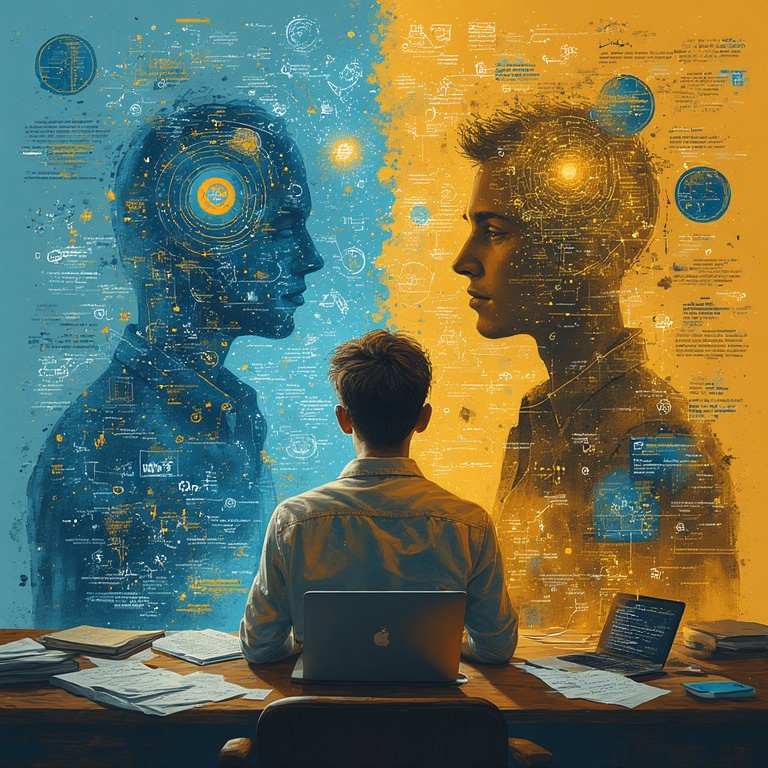AI is shaking up the entire world, and no industry is immune to its touch. Education is almost the opposite: it is directly in the sights of AI tools—perhaps more than most other industries. Why? Because education is about teaching people how to think, analyze, and create. AI is increasingly capable of doing all of those things, at least on the surface. That tension makes education ground zero for debates about what it means to learn, what skills matter, and how best to prepare students for a future where AI will be everywhere. Let’s have a look.
The Means vs. The Ends
At its best, education is about the process of learning, not just the end product. Writing a paper, working through a proof, or conducting an experiment are all exercises in building reasoning and judgment. The means—the messy, frustrating steps of thinking and problem-solving—are what actually develop skills.
When a student offloads all that work to AI, they short-circuit the very thing education is meant to provide. They might get a polished paper, but they lose the opportunity to strengthen their own ability to analyze, synthesize, and communicate ideas. In other words, they have the end, but not the means.
Contrast this with the workplace. Employers care about results: polished reports, clean code, effective marketing campaigns. In that context, using AI to save time and sharpen output is not “cheating”—it’s efficiency. This is where the ends really do matter. The problem is when students mistake the work product for the learning itself.
One of the central problems is that these two systems are in opposition when it comes to using AI, but the intent of one system is to educate and prepare candidates for the other. So I'll pose a question:
If the means are more important in education and the ends are more important in the workplace, how can we reconcile the goals of both systems to prepare students to be the workforce of the future?
The Trap of Prohibition
Some schools and universities have tried to deal with the problem by banning AI tools altogether. On the surface, this seems like a way to preserve academic integrity. But such bans ignore a deeper issue: the future workforce will need to know how to use AI responsibly. Pretending the tools don’t exist is just as damaging as over-relying on them.
If students graduate with no experience using AI, they will be at a disadvantage in a labor market where companies expect employees to work faster, smarter, and more creatively with the assistance of AI. Banning AI in education would be like banning calculators in engineering programs or word processors in English classes. It makes the classroom environment less relevant to the real world.
AI as a Springboard
The alternative is to treat AI as a springboard rather than a shortcut. Students can use AI to brainstorm ideas, refine drafts, or test code—but then they must engage critically with the output. Educators can design assignments that require reflection, iteration, and original analysis that AI alone cannot provide.
For instance:
- Writing: Use AI for an outline, then students must expand it with personal research, arguments, and evidence.
- STEM: AI can help with coding syntax or explaining concepts, but students must explain why their algorithm works or how they tested its limits.
- Humanities: AI can suggest interpretations of a text, but students must critique those interpretations and defend their own.
This way, AI doesn’t replace learning—it accelerates it. Students practice not only the traditional skills of critical thinking but also the new skills of the AI era: prompt engineering, evaluating machine output for accuracy, and blending human judgment with computational power. It cannot be overstated how important the evaluation skill will become as more and more AI content is generated and proliferated across the world.
Policy and the Future Workforce
Education policy will play a decisive role in shaping how students encounter AI. Policies that swing too far in either direction—total prohibition or unrestricted use—risk leaving students unprepared. The real challenge is to strike a balance: safeguarding the means of learning while embracing the ends that employers and society will expect.
Future workers won’t just need to “know things.” They’ll need to know how to learn, unlearn, and adapt with AI at their side. They’ll need discernment: the ability to distinguish between an AI-generated answer that’s plausible but wrong, and one that’s genuinely useful. They’ll need creativity and judgment that cannot be automated.
That is the end goal of education in the age of AI: not to fight the tools, but to guide students in becoming thinkers who can wield them wisely.
Closing Thought
AI in education is not a question of whether students should use it—it’s about how. If schools treat AI as the enemy, students miss out on the very skills the workforce demands. If students treat AI as a crutch, they miss out on the very growth education is supposed to provide. The path forward lies in the tension between means and ends: protecting the process of learning while embracing the reality of a world transformed by AI.
